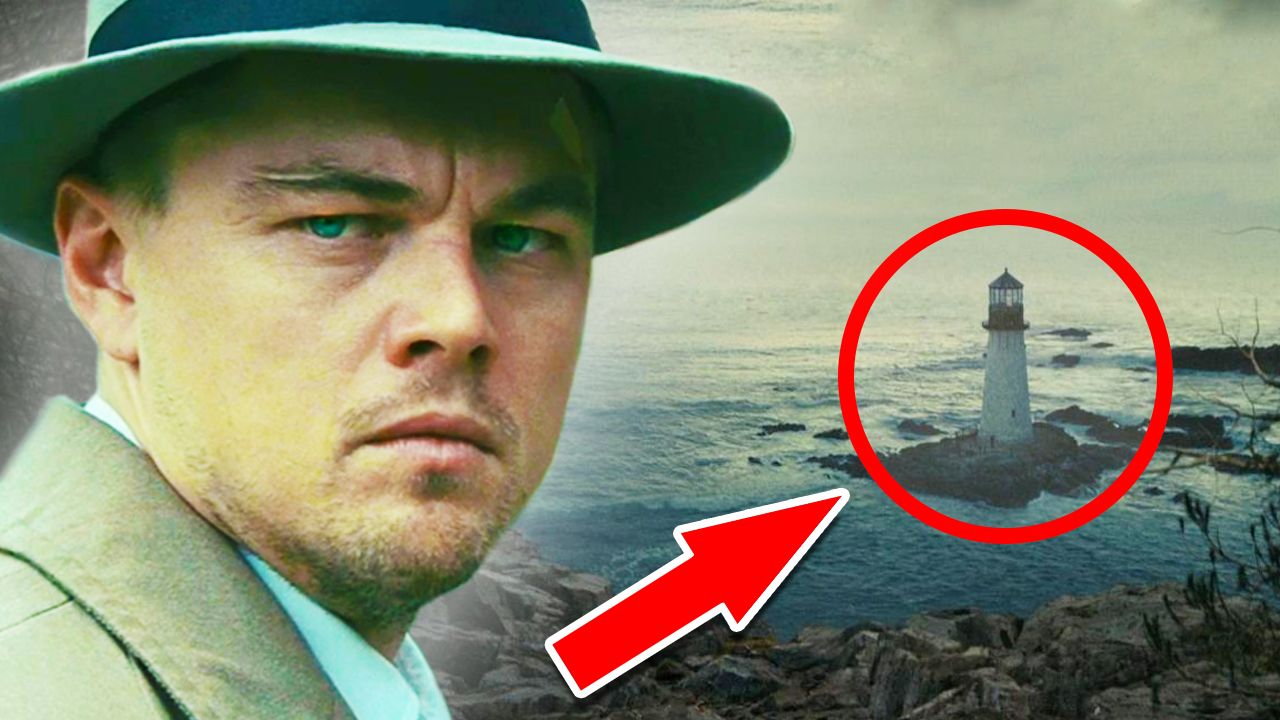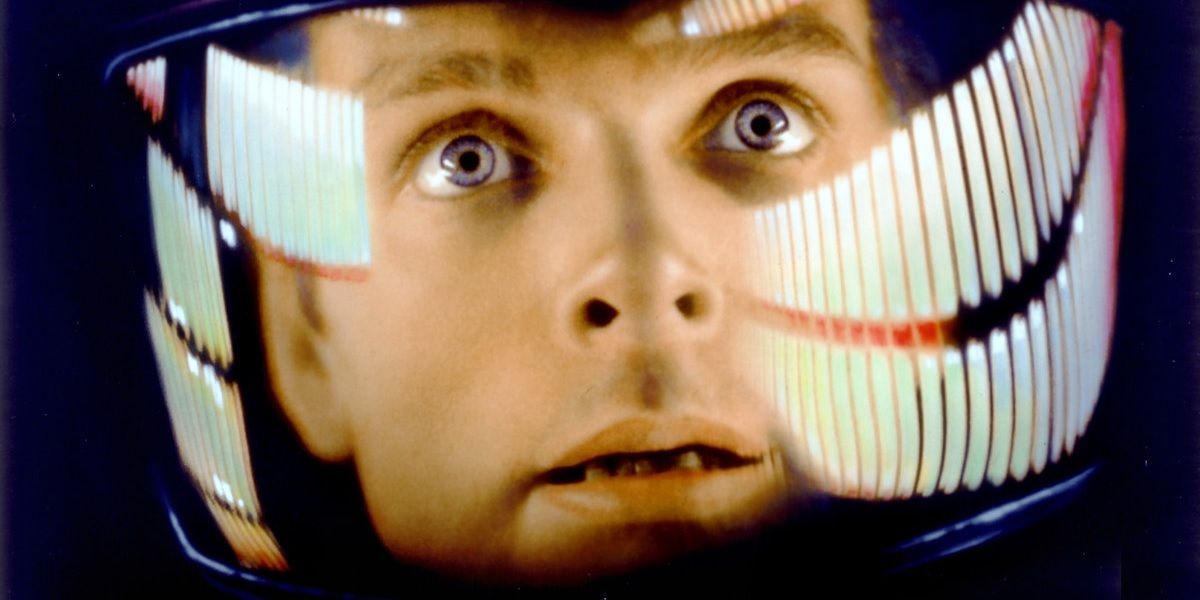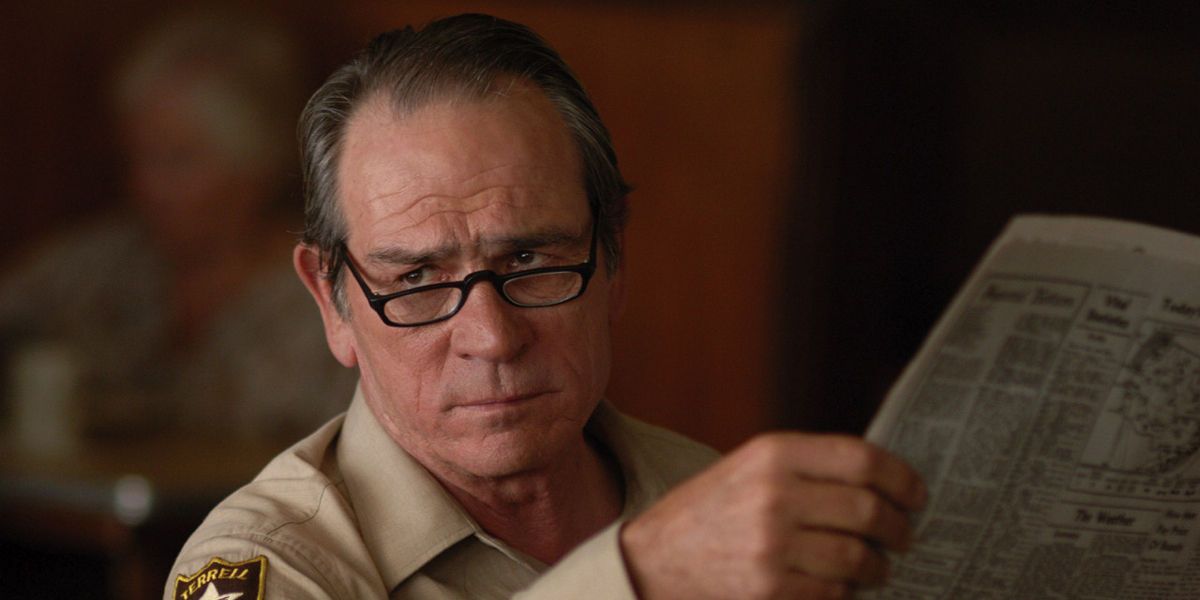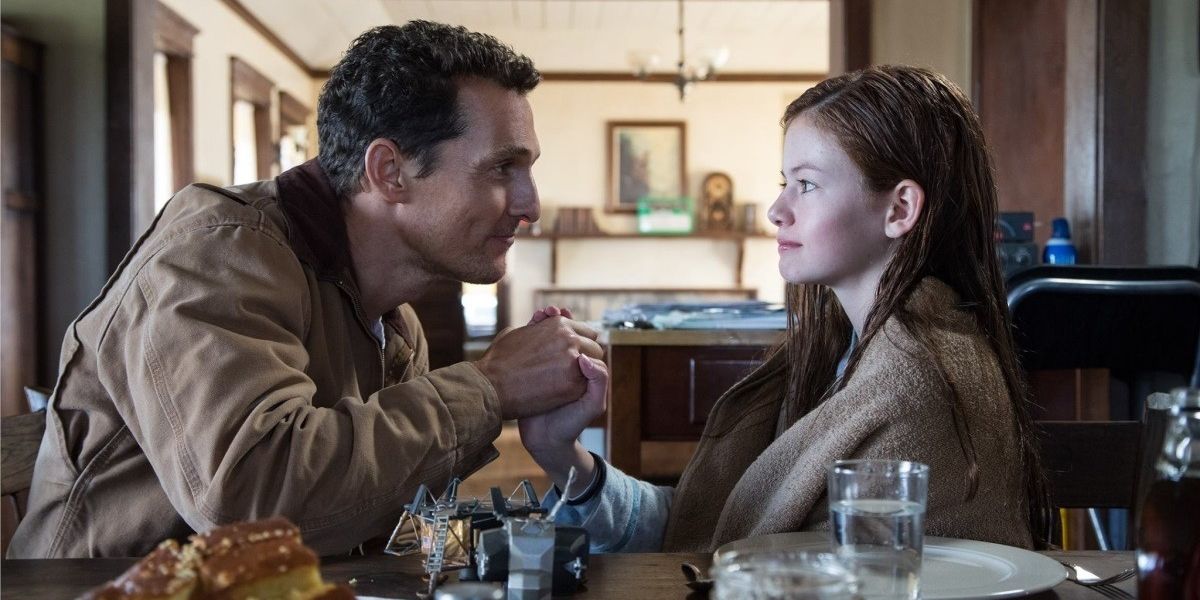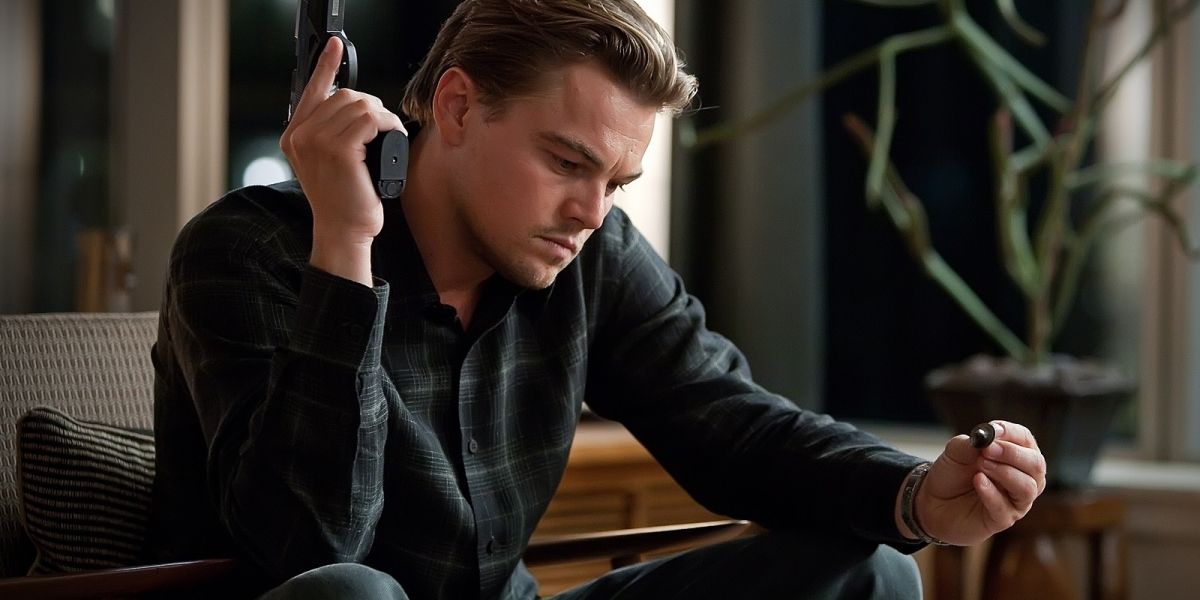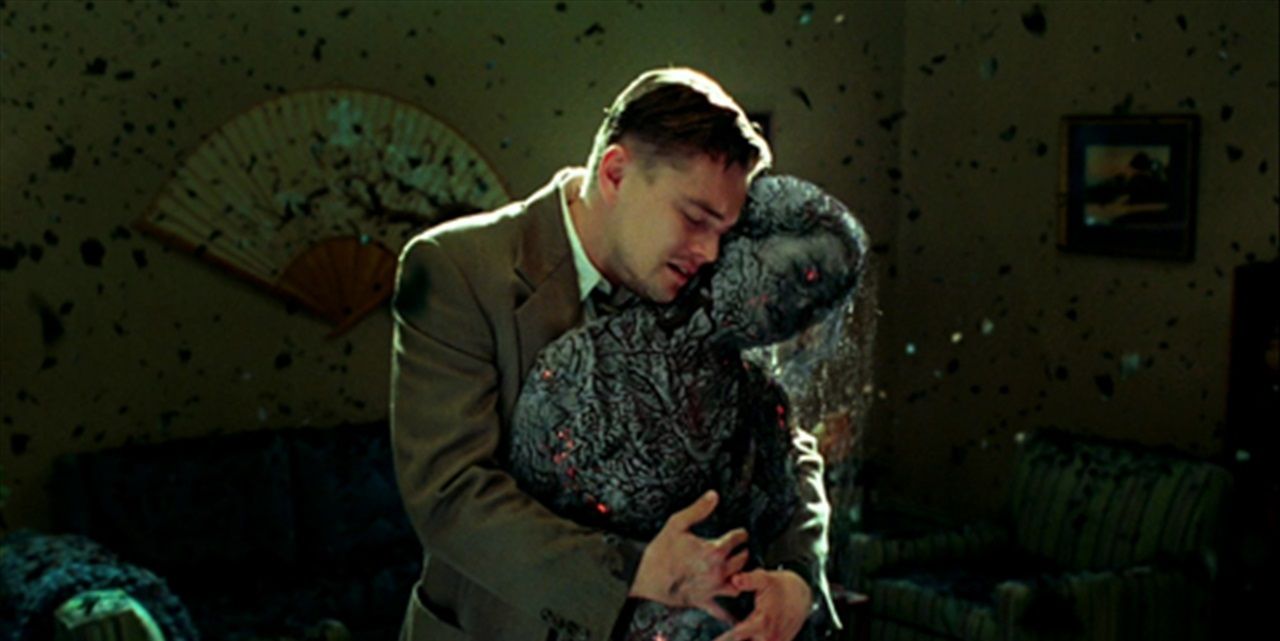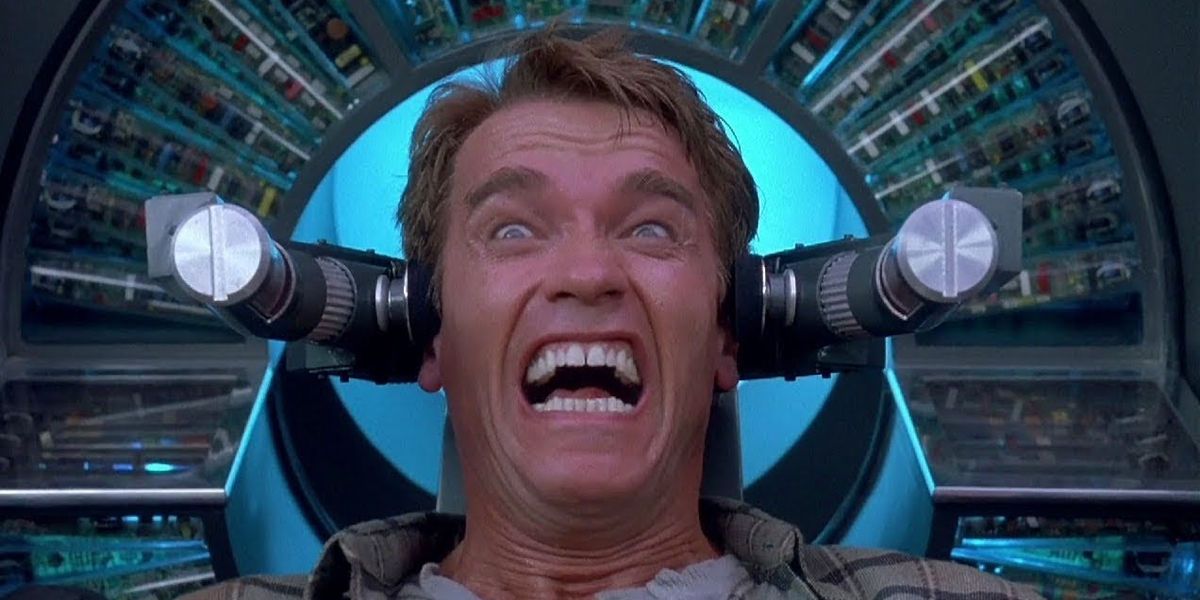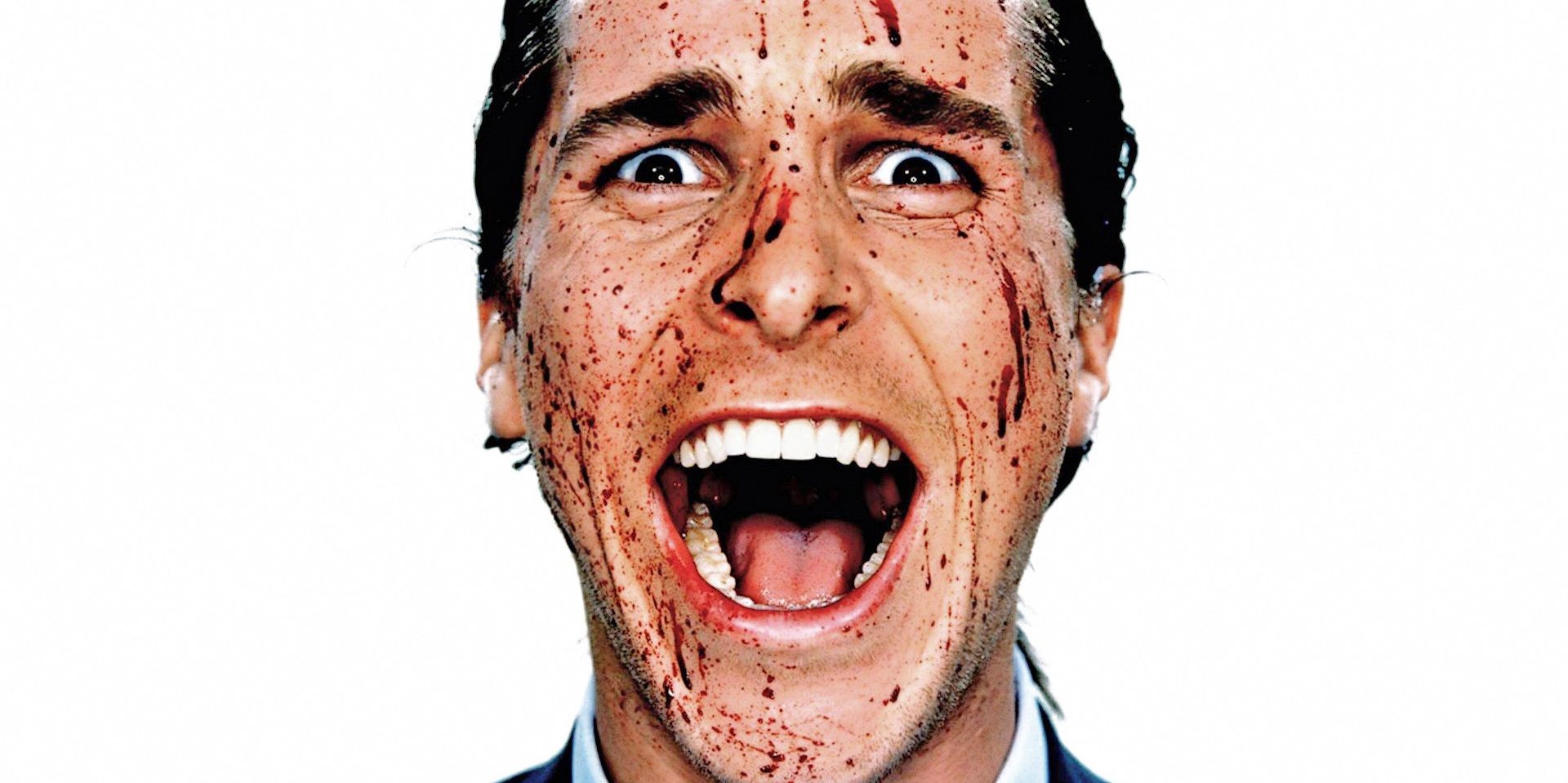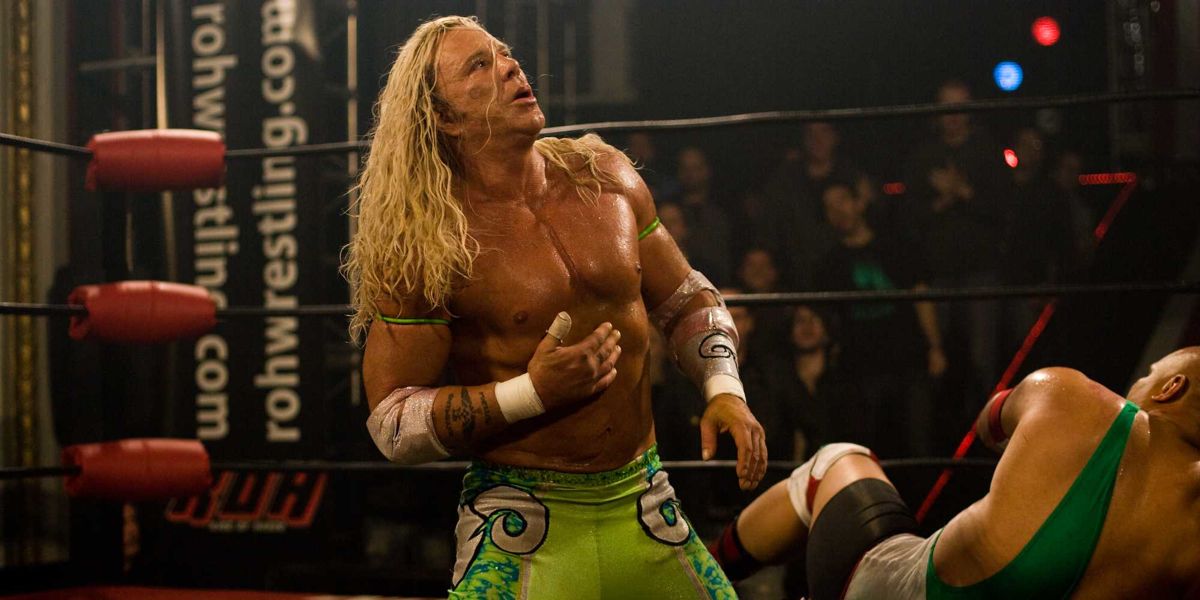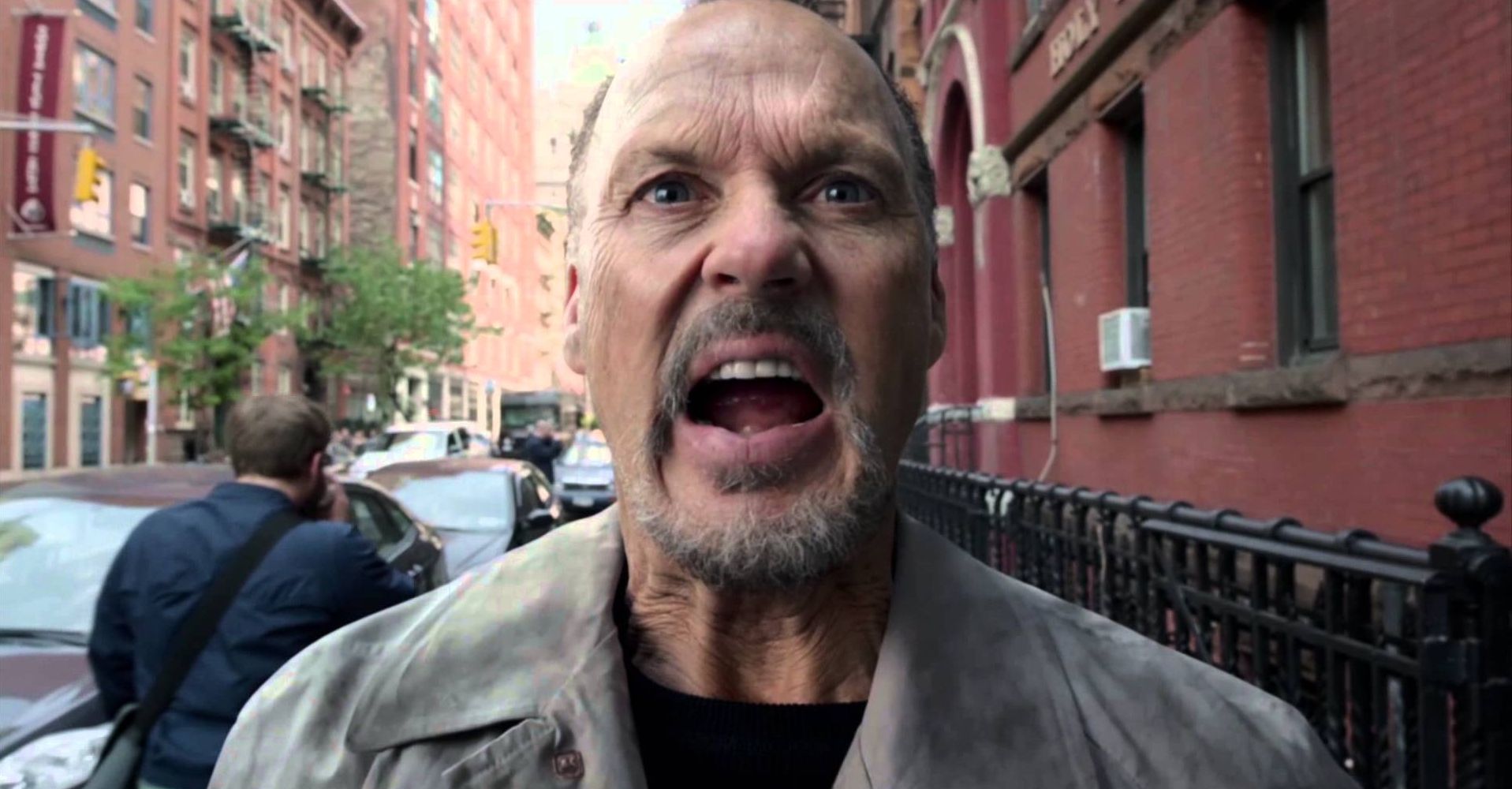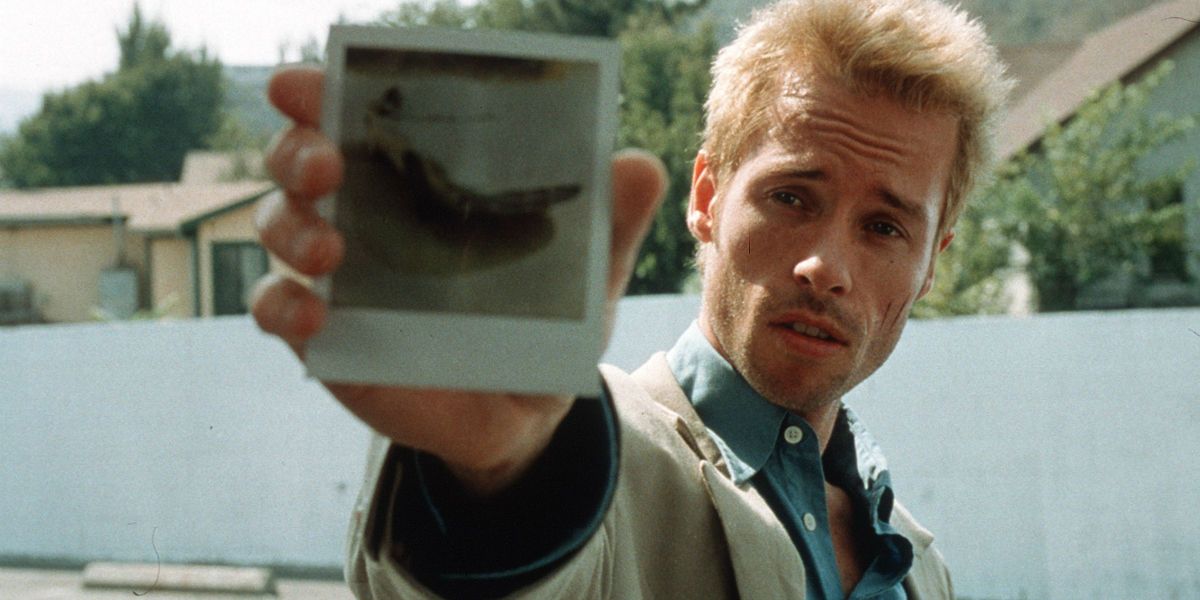The most difficult part of a story to nail down is the conclusion. Everything in the film has been leading up to this moment, and if the audience doesn't get a satisfying payoff, the movie could be doomed. Certain moviegoers love finality in the narrative, and prefer if they understand exactly what happened to the characters during the fateful third act.
Sometimes, the director likes to throw viewers for a loop and craft an ambiguous finale that keeps everyone guessing. When this happens, audiences are usually more concerned about figuring out those last moments than anything else from the film, devising insane theories to try to make sense of what they just saw. Here are Screen Rant's 10 Confusing Movie Endings Finally Explained.
Obviously, there will be PLENTY of SPOILERS in this post.
2001: A Space Odyssey
The surreal last sequence of Stanley Kubrick's sci-fi epic has puzzled even the director's most passionate fans for decades. Astronaut Bowman (Keir Dullea) transports across the vast distances of space before ending up in a bedroom and speedily grows in age to become an old man. He ends up turning into the famous star child (giant baby) looking at Earth as the credits start to roll. So what does it all mean? Kubrick himself provided an explanation.
At its basic core, 2001 is a film about mankind's evolution, examining the primitive beginnings of the apes billions of years ago all the way through a technologically advanced future where space travel is possible. The star child is meant to be an enhanced being and returns to Earth to take the next great step for mankind. As dour as some of Kubrick's filmography could be, that's an inspiring message, since it portrays the film as being hopeful and looking ahead to bettering ourselves as a species.
No Country for Old Men
Instead of seeing an old fashioned Western shootout, the Coen brothers' Best Picture winner was criticized by some for ending rather anticlimactically, as villain Anton Chigurh (Javier Bardem) kills Llewelyn Moss (Josh Brolin) off-screen and escapes from the authorities. Recently retied sheriff Ed Tom Bell (Tommy Lee Jones) tells his wife about a dream involving his later father, in which he rides past Bell to go light a fire somewhere. The film ends with Ed saying "And then I woke up" before fading to black.
Viewers were so invested in Anton's pursuit of Llewelyn that most missed how this sequence conveys the main theme of No Country for Old Men. Bell was reflecting upon his life and how now it was probably time for him for move on and join his father, wherever he went. Everything moviegoers need to know is in the title. Bell is in essence the movie's true protagonist, as the story is about him realizing he's done all he can and the world is moving too fast for him to keep up. He couldn't save Llewelyn or stop Chigurh, so the only left was to retire.
Interstellar
Christopher Nolan left even the most attentive viewers puzzled with his 2014 sci-fi epic. In Interstellar's third act, Cooper (Matthew McConaughey) drops himself into the back hole and he lands inside a tesseract that was placed there by so-called "future humans." This enables him to communicate with his daughter Murph (Jessica Chastain) and give her the information she needs to save the people of Earth. But if things were so dire humanity was about to get wiped out, how did future humans accomplish this to begin with?
One explanation is that Interstellar deals with alternate realties and universes, meaning that a non-linear timeline is possible. In all likelihood, beings from another dimension reached out to give the humans in our world a helping hand when things got really rough to maintain a sense of harmony in the time-space continuum. The existence of a non-linear timeline would also explain how future Cooper (who was traveling from one of those other dimensions/universes) could be the "ghost" that made noise in Murph's bedroom. It's a lot to get your head around, but there's some sense there when you think about it.
Inception
One of the most famous images in movies this decade is Cobb's (Leonardo DiCaprio) spinning top in the final scene of Inception, cutting to black before audiences could see if the movie's hero was in a dream or reality. There are subtle clues scattered throughout Inception that make the picture clearer, but this is another instance where moviegoers were paying attention to the wrong aspect. Instead of focusing on the top, they should have looked at what Cobb did after he spun it.
Cobb spends the whole film committed to one goal: getting back to seeing his children that he was forced to leave when his wife Mal (Marion Cottilard) died. After obsessing over the very "dream or reality?" question that moviegoers asked themselves during this last moment, Cobb decides to walk away from the top before it completes its spin, signifying that he no longer cares where he is. He's just happy to be back with his family. Nolan himself agrees with this interpretation, but that probably won't put an end to the debate.
Shutter Island
Teddy Daniels (DiCaprio) discovers a brutal truth while investigating the Ashecliffe Institute, learning that his real name is Andrew Laeddis and he's actually a patient at the hospital for the criminally insane. He was incarcerated after he murdered his manic depressive wife for drowning their children. What "Teddy" has just completed was an elaborate role playing exercise set up by his "partner" Chuck (Mark Ruffalo), who is really psychiatrist Lester Sheehan. Sheehan is working with Dr. John Cawley (Ben Kingsley) to help Andrew recover from his condition, and if they fail Andrew will be lobotomized.
Andrew appears to have accepted the treatment, but shows signs of regression when he calls Sheehan "Chuck" during a conversation later on and implores that they need to get off the island. Disappointed, Sheehan signals for the orderlies to take Andrew to get lobotomized. Before he's taken away, Andrew asks, "Which would be worse? To live as a monster, or to die as a good man?" hinting that Andrew has been cured, and would rather die as a good man who made peace with his decisions than the monster who ended his family through neglect.
Total Recall
We've already pointed out how Doug Quaid's (Arnold Schwarzenegger) adventure on Mars plays a little too close to the description of the secret agent fantasy laid out by the Rekall employees, and ever since the film came out viewers have been trying to decide if the plot all takes place in Quaid's mind or actually happened. Director Paul Verhoeven intentionally left the final scene ambiguous, but he believes it was all just a dream. And there's some evidence that backs him up.
The theory states that Quaid's brain had a violent reaction to the Rekall implant, and he incorporated real things from his life (his wife, Harry from work) into the dream (which is something normal people do on a daily basis). Furthermore, Quaid's new love interest Melina (Rachel Ticotin) is identical to the "fantasy girl" Quaid personally selected prior to the procedure, and the name of the program is even Blue Skies on Mars - which is the objective of Quaid's mission. Things are just a tad too coincidental for our taste.
American Psycho
Patrick Bateman (Christian Bale) is a New York yuppie with a violent edge, as he's responsible for several grisly murders (we'll never look at Huey Lewis and the News the same way again). At the end of the film, he confesses his crimes to his lawyer Harry (Stephen Bogaert), who mistakes him for another colleague and laughs off Bateman's concerns as a joke. This calls into question whether or not Bateman imagined it all, but according author Bret Easton Ellis (who penned the source material novel), having it all be in Bateman's head would render the point of the story moot.
American Psycho pokes fun at yuppie culture, and is a satire of those obsessed with material possessions and high-ranking status in society. When Ellis wrote the book, he was portraying this group of people as shallow and hollow individuals, something that would have been lost if Bateman's actions were hallucinations. Instead, the yuppies are so self-centered that even when a serial killer admits his murders to someone, they brush if off because it does not directly affect them. Bateman's final monologue offers some clues to support this.
The Wrestler
The final image of Darren Aronofsky's sports drama is main character Randy Robinson (Mickey Rourke) jumping off the ropes in the ring before the credits begin to role. His ultimate fate is left up to the interpretation of the viewer, but there are hints that he dies during this match. Aronofksy himself agrees with this interpretation, saying "if not now, when?" in regards to Randy's ultimate demise.
In The Wrestler, Randy has a serious heart condition and he's informed by his doctors that continuing his career could kill him. But Randy has damaged all the personal relationships in his life, most notably with his estranged daughter Stephanie (Evan Rachel Wood) and feels as if he has nothing to live for. Like he tells Cassidy (Marisa Tomei), he belongs in the wrestling ring with the fans who love him. It's here where he feels alive and can find peace. So despite the doctor's orders, Randy returns to the sport one final time to do something he's great at.
Birdman
This Best Picture winner left a lot of people confused by the way it ended. Riggan Thomson (Michael Keaton) has accomplished his goal of putting together a successful Broadway adaptation. He brought the house down by shooting himself in the face in what appeared to be a suicide attempt, but he survived and is shown recovering in the hospital. Once he's finally alone, he walks around his room and looks out the window. Riggan opens it, and the camera cuts away before we see what he does. The last image is his daughter Sam (Emma Stone) running to that same window, looking up at the sky and smiling.
There are many interpretations for what happened to Riggan. One of the most common theories is that Riggan tried to kill himself again in the hospital, and Sam is either looking at the meteor shower that was featured in Birdman's beginning or the free "spirit" of her deceased father floating up to be at peace. Birdman has several instances where Riggan floats or flies around, but there tends to be a real-world version taking place (see: the angry cab driver), so even if Riggan is "flying," it's probably because he killed himself jumping out the window and is now going to the afterlife.
Memento
Christopher Nolan's breakout hit set the mind-twisting template that many of the director's later films would follow. Telling the story in reverse chronology, viewers discover how Teddy (Joe Pantoliano) became the "John G." that Leonard Shelby (Guy Pearce) is hunting down. Teddy informs Leonard that the two of them tracked down the real John G. (who killed Leonard's wife) a while back, but the memory-challeneged Leonard never remembered he did it. To keep his new friend happy, Teddy sent him after other "John G's." to get rid of bad guys and make some money on the side. After hearing this, Leonard makes Teddy his new target, and viewers have been trying to figure out the truth ever since.
During his exposition, Teddy shows Leonard a photograph of Leonard smiling, allegedly taken after he killed the original John G. This lends credence to Teddy's story, as Leonard always too photographs to help him remember things. Teddy figured this could be a... memento to help him be at peace. In his final monologue, Leonard even admits that he lies to himself sometimes so the truth is bent to fit his needs. He always needs a John G., so he made Teddy his next would-be victim. It's true that Teddy would use Leonard's condition for his own advantages, but there's little reason to believe he would fabricate this kind of story.
Conclusion
Ambiguous endings are always interesting and lead to fascinating discussions as people try to fit the puzzle pieces together and make sense of what just happened. While film is a medium that demands answers to show the audience everything, sometimes directors can get away with this trick and craft something that adds layers to their movie. Confusing endings have been a staple of Hollywood for years, and they're not going away anytime soon.
As always, our list is not meant to be all-inclusive, so be sure to share some of your picks in the comments section below! And subscribe to our YouTube channel for more fun videos like this one.

